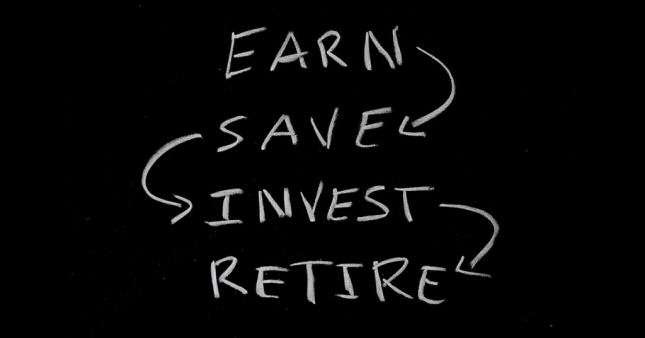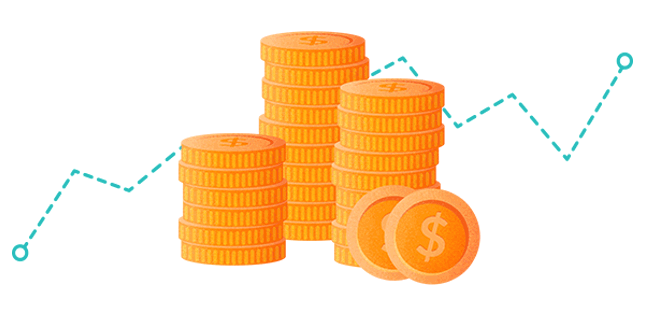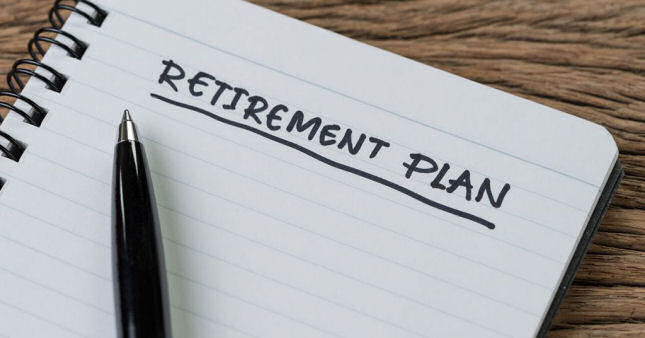Early retirement: Secrets on how to retire early
What is early retirement?
The point in time when you retire may be one of your own choosing. Early retirement is leaving the workforce before you reach the statutory retirement age. Since people first become eligible for Medicare at age 65, retiring early is normally defined as retiring at any age prior to reaching age 65.
The Social Security Administration defines the early retirement age as age 62, which is the time at which you can first begin taking your Social Security benefits. However, if you begin taking benefits at age 62, you will only receive around 70 percent of the full amount that you would have received if you had waited until your full retirement age.
If you want to take retirement early, there is not a set age. The Financial Independence Retirement Early (FIRE) movement is one of the methods that you might be able to follow in order to retire early. When you can retire will depend on how much you have saved in your retirement and investment accounts, any passive income streams that you might have, and whether you are able to live frugally.

Statistics on early retirement and the average age of retirement
According to an analysis of data from the U.S. Census Bureau by Smart Asset, the average retirement age in the U.S. is 63. The average retirement age varies from state to state, ranging from a low of 62 to a high of 65. People in New England have the oldest average ages of retirement.
While retiring early may be considered to be any age from 62 to 65, some plan to retire even earlier. Some people in the millennial generation are currently working to retire by age 40 or even younger by following the FIRE movement. While it is possible to retire very early, it may not be the best idea for many people.
Steps to try to achieve early retirement
The FIRE movement is a retirement strategy that is focused on your financial goals in retirement rather than on a specific age. For example, if you plan to retire at age 45, you would begin by figuring out how much money you would need to have to live on beginning at that time.
The goal of the FIRE method is to save enough money so that you can live off of the interest while preserving the capital. Another method is the 4% rule. Under this plan, you should generally aim to save enough money that you are able to live off of 4 percent of your savings each year.
It is important to note that if you choose to take your Social Security benefits before you reach the full retirement age, you will not receive the full amount. Under the FIRE movement, you would also take into account the effect that your retirement will have on the benefits that you will ultimately receive.

How much money will you need in retirement?
The first step on your path to early retirement is to figure out how much money you will need in retirement. To do this, you will need to determine your anticipated expenses and your budget. You will also need to determine your life expectancy and how long your current savings and income will last in retirement.
After you have figured these things out, you can come up with an estimate of the amount that you need to save for retiring early. The 4% rule indicates that you should have enough saved that you can comfortably live off of 4 percent of your total savings because that amount would primarily represent your dividends and interest rather than your principal.
Start by thinking about your expenses now and what you expect them to be after you retire. You want to identify areas in which you can cut costs now so that you can save more. Think about the lifestyle changes you are willing to make and figure out your future expenses. You can subtract out all expenses that are related to your job since you will not have them after you retire at an early age.
You will then want to create a retirement budget. Figure out how much money you will be able to reasonably afford to spend every year. This amount will depend on the total amount of retirement savings that you have available to you.
Your life expectancy is an important factor to consider. You can begin by looking at a life expectancy table to give you a general idea. You should also consider the longevity of people in your family. For example, the average life expectancy of U.S. males is 78 while the average of U.S. females is 81.
However, if the people in your family tend to live longer than the average age, you should take that into account. Your life expectancy is important so that you can make certain that you have enough savings to last for as long as you live after you retire at an early age.
You can next use a retirement income calculator to figure out how long your current income and savings will last after you retire. This can give you a rough estimate of whether you are ready to retire or if you should instead wait to amass more savings.
How will early retirement affect my Social Security and other benefits?
If you want to retire at an early age, you need to be prepared for some of the challenges that you will face after retirement. Retiring before you are eligible for Medicare might mean that you will have to pay a substantial amount of money out of pocket for your health care.
Accessing health care might be easier now with the availability of the marketplace. You might also want to consider getting long-term care insurance or a whole-life policy that has a long-term care rider. A Health Savings Account (HSA) might also help you to pay for medical costs as they arise until you become Medicare-eligible.
Your Social Security benefits are also important to take into account. When you receive your statements from the SSA, the future benefits amount that is stated is based on the idea that you will continue working until the stated age. For example, if your letter states that you can expect to receive $1,200 per month if you retire at age 62, keep in mind that the figure is based on you continuing to work and to earn your current income until age 62.
You should understand how retiring early can impact various benefits. When you decide to take early retirement, it will cause your benefits amount to go down. You will not have as many years to contribute built up, so your benefits will decrease. If you are wondering how an early retirement age might impact Social Security, you can use my Social Security benefits calculator to get a rough idea of how much you can expect to receive at different ages including 62, 66, 67, and so forth.

The tax implications of early retirement are also important to consider. If you withdraw money from certain types of tax-advantaged retirement accounts before you reach age 59 1/2, you will face a 10 percent penalty on top of paying taxes on the withdrawal amounts at your ordinary income tax rate.
Some accounts like Roth IRAs may allow you to withdraw funds early. It is important that your contributions but not your earnings can be withdrawn before you reach age 59 1/2 without penalty as long as the account has been open for at least five years. If your goal is an early retirement age, it might make sense for you to consider rolling over other types of retirement accounts into a Roth IRA to minimize some of the tax consequences you might otherwise face.
Housing can be another challenge when you choose an early retirement age. You might need to consider downsizing to a cheaper home or apartment or to move to an area with lower costs of living. Some early retirees choose to forgo the housing problem altogether and instead live and travel in recreational vehicles.
Comprehensive planning to have income last during early retirement
If you want to know how to retire early, you will need to engage in comprehensive retirement planning and develop strategies for building wealth. A common rule of thumb is to have average retirement savings contributions of around 10 percent of your income. However, if you want to gain financial independence much sooner for early retirement, you will need to figure out how to save much more than the average retirement savings contributions recommendation.
One way that you can save more is to reduce your outstanding debt and to spend less money. Your goal should be to eliminate your debt as quickly as possible, live far below your means, and contribute all of the excess to your investment and retirement accounts. You might find that you need to end up saving as much as 30 percent to 70 percent of your income if your goal is early retirement.
What is the FIRE movement?
The Financial Independence Retirement Early method is a movement that is dedicated to developing a program of extreme savings and investments. The FIRE approach might allow you to retire years earlier than you otherwise might be able to with a traditional plan and budget. Followers of the method save up to 70 percent of their incomes, which is far more than others do.
By allocating such a high percentage of your income, you might be able to retire in your 40s or 50s instead of in your mid- to late-60s. The Financial Independence Retirement Early movement was born out of a 1992 bestseller called “Your Money or Your Life” by Vicki Robbin and Joe Dominquez. The central tenet of the book is that every expense you have should be measured against the time from your life that it takes to earn money to pay for it.
In order to be able to follow the plan for building wealth quickly through extreme savings, adherents of the movement cut nearly all of their expenses, live very frugally, and continue working at traditional jobs for multiple years so that they can put most of their income into their savings.
Retirement planning under the FIRE method might involve moving to the cheapest possible apartment, downsizing everything, forgoing such things as eating in restaurants, and making other cuts until your expenses are barebones. Everything that you earn beyond what you need to pay for your basic living expenses is then deposited into your savings and investment accounts.
People try to save enough until they have up to 30 times their annual incomes so that they can try to live off of their interest and dividends. Commonly, people who implement the Financial Independence Retirement Early strategy will try to live off withdrawals from their contributions of no more than 3 to 4 percent per year.

What is the 4% rule?
The 4% rule was developed in the 1990s by William Bengen. According to the 4% rule, if you withdraw no more than 4 percent of your retirement savings during the first year and then adjust your withdrawals for inflation after that, you should have enough money to last for 30 years.
While the 4% rule is a good starting point, it is not infallible. The idea behind the rule is that your retirement savings should be comprised of approximately 50 percent bonds. However, interest rates today are much lower than the mid-1990s when Schengen developed the rule.
Another problem is that the rule assumes that the market will return fairly even rates of return. If there is a market downturn right before you retire, withdrawing 4 percent of your savings could place you at a significant disadvantage. If the market makes a major upswing, you may be left without being able to take advantage of your additional earnings.
Your strategy for building wealth as you implement your plan for how to retire early might begin with the 4% rule. However, you might need to make adjustments to the rule so that your savings are likelier to last much longer after you gain financial independence and retire early.
What ways can you supplement your retirement planning?
There are several ways to increase your savings. You can work to supplement your income by adding a second job, asking for a promotion or raise, or working longer hours. At the same time, you can work to build multiple sources of revenue.
Some additional sources of revenue for retirement planning might include purchasing investment properties and investing in income-producing investments like dividend-paying stocks and bonds. Alternative potential passive income streams might include affiliate marketing, peer-to-peer lending, or investing in crowdfunded real estate. If you have multiple passive income streams in addition to your income from work, saving much faster will be easier, and the passive income streams can continue after you leave the traditional workforce.

Increase your retirement savings
If your goal is to retire early, you are going to need to maximize your contributions to your retirement accounts. If you have a 401(k) plan at your job, you should aim to contribute the maximum annual contribution limit of $19,000 per year if you are younger than age 50 or $25,000 if you are age 50 or older. In addition, you should also open a traditional IRA, a Roth IRA, or both.
While 401(k) plans and traditional IRAs have contributions that are made on a pre-tax basis, your contributions to a Roth IRA are made after tax. However, you will not be taxed on your withdrawals from a Roth IRA after you retire. If you retire before you reach age 59 1/2 and have had a Roth IRA open for five years or more, you can withdraw your contributions at any time without a penalty. However, you cannot withdraw your earnings, so you will need to keep careful track.
Traditional and Roth IRAs both have annual contribution limits of $6,000 for people who are younger than 50 and $7,000 for people who are older than 50. If you have both types of accounts, the combined maximum that you can contribute to your traditional and Roth IRA accounts is $6,000 if you are younger than 50.
You should also take advantage of compounding. Instead of taking dividend checks, it is a better idea to automatically reinvest them. This can allow you to compound your savings so that they might grow even faster.
Make certain to become an expert in smart withdrawal strategies so that you can account for any taxes or penalties that you might face. To avoid the 10 percent early withdrawal penalty, you might want to consider rolling your 401(k) plan and your traditional IRA into a Roth IRA. While you will have to pay taxes on the amounts that you roll over, you can avoid the 10 percent penalty.
Finally, you need to consider the impact that early retirement might have on your retirement accounts. If you end up having early withdrawal penalties assessed against you, your savings may not last you for as long as you need.
Research stable financial investments and platforms
Make certain to research potential investments before you invest your money to try to choose investments that are stable. You should also make certain to research different investment platforms so that you might find one that charges low or no fees and that has earned good reviews.
Once you have an idea of the securities that you are interested in, open your account with the brokerage that you have chosen. You should invest with a long-term view according to your chosen time horizon, risk tolerance, and financial goals.
Review and make adjustments as necessary
After you have opened your accounts and have started investing, you will want to review them on a quarterly or annual basis. You should make adjustments as necessary and change your level of risk the closer that you draw to your retirement.
Changing your portfolio to a more conservative mix as you draw near to your target retirement date may help you to preserve your principal so that you can live off of your interest alone. This may make it easier for you to stick to the retirement budget that you have created.
Start investing for free at M1 Finance
M1 has all the benefits of a brokerage with zero cost. M1’s free automated investing can help you to achieve your early retirement goals. You can choose from among more than 80 portfolios that have been created by experts to match different levels of risk and financial goals. Alternatively, you can customize your portfolio by choosing the securities that you prefer.
We charge no commissions or management fees, so your money can work harder for you. You can choose to roll over your 401k into a traditional or Roth IRA with M1, then automate your investing so you never miss a chance to invest in your future. M1’s intelligent automation allocates money from every deposit to maintain your target asset allocation and ensure your portfolio stays on track. With M1 you have the tools at your fingertips in order to become an informed investor. The anytime, anywhere platform and mobile app are designed to make investing simple for investors that range from beginners to advanced.
